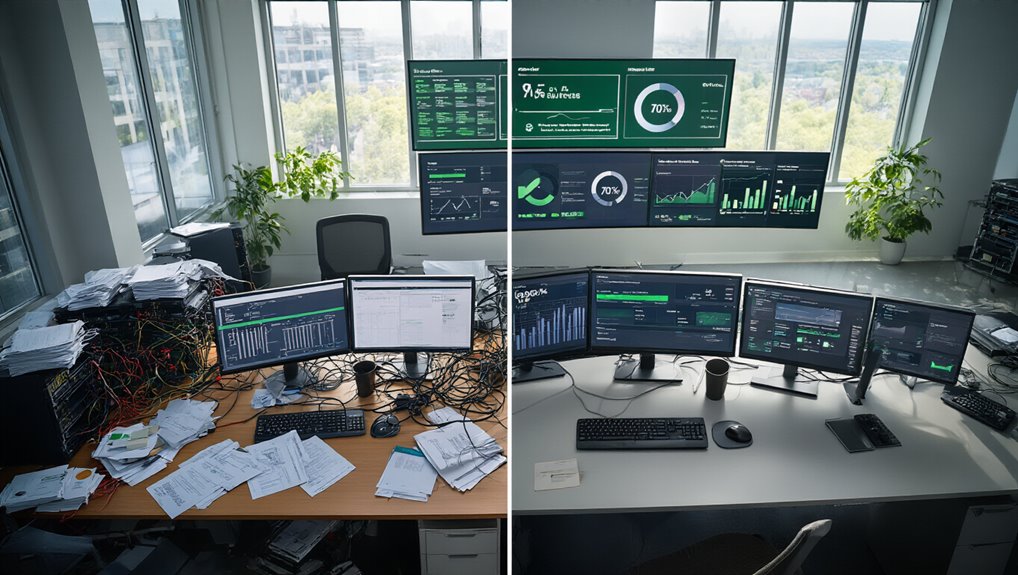While software development teams race to adopt AI tools and automation solutions, the reality of complete end-to-end automation remains elusive for most organizations. Only 6% of IT professionals report having fully automated continuous delivery processes, revealing a notable gap between aspirations and implementation. This disconnect occurs despite the rapid proliferation of AI coding assistants throughout the industry.
The promise of AI coding tools collides with reality as full automation remains a distant goal for 94% of development teams.
Organizations typically juggle between 8 to 10 distinct AI tools, creating operational risks and governance challenges that counteract efficiency gains. The result is an automation paradox where AI accelerates coding speed but collides with under-automated downstream processes. For example, 50% of application deployments still rely on manual processes, and 55% of build pipelines lack proper quality checks. The Harness study further confirms this trend with 64% of organizations reporting that infrastructure code deployments still depend on manual intervention steps.
The automation journey often stalls due to fundamental challenges. A staggering 73% of test automation projects fail to deliver promised ROI, with 68% abandoned within 18 months. The root cause frequently stems from prioritizing speed over sustainability, leading to high maintenance costs that undermine long-term benefits. Additionally, the “last mile problem” persists, where the final 10% of automation proves exponentially more difficult to implement.
These limitations manifest in daily development activities. Consider that 67% of software teams cannot set up and test their environment within 15 minutes, while 61% of engineering leaders report code reviews taking over a day. Such bottlenecks notably constrain productivity despite AI’s coding acceleration. Most projects face the unfortunate reality that business logic disconnect prevents technical validation from accurately reflecting actual user experiences. IT outsourcing can partially address these bottlenecks by providing access to specialized expertise without requiring significant upfront investments in talent acquisition.
Governance and security concerns further complicate automation efforts. With 52% of teams lacking incident management tools and inexperienced developers increasingly using AI assistants, the risk landscape expands considerably. Organizations must implement AI-powered guardrails to prevent security vulnerabilities and cost overruns.
The path forward requires consolidating fragmented toolchains into unified platforms and recognizing that human oversight remains essential for complex scenarios. Organizations that achieve even moderate automation in continuous delivery processes more than double their code shipment frequency—demonstrating that while complete automation remains aspirational, incremental progress delivers substantial benefits.







